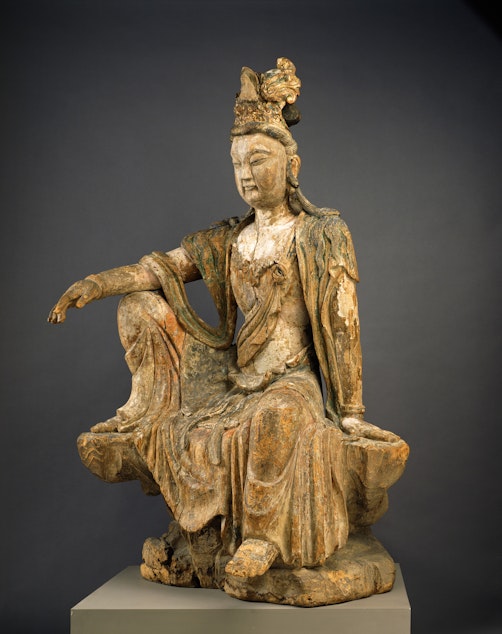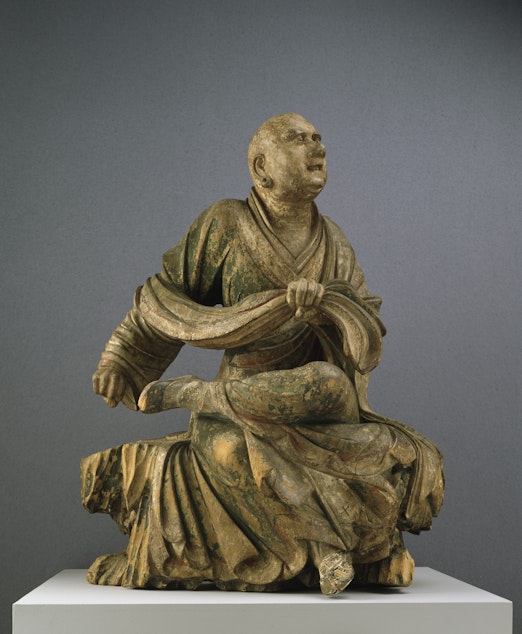Seattle's Asian Art Museum reopens, but not quite the same as it ever was
 1 of 5The Asian Art Museum in Seattle.
1 of 5The Asian Art Museum in Seattle. When Seattle’s Asian Art Museum closed its doors three years ago, fans of the historic Art Deco landmark in Volunteer Park wondered how the $54 million expansion and renovation would change the beloved building.
They’ll find out Saturday, Feb. 8, when the museum throws open its doors for a weekend-long celebration. Visitors can expect fanfare and lots of art, some of it on display for the first time.
From the front, the stone building looks the same as it has since it first opened in 1933. The jaunty camel sculptures (replicas of the originals, now housed in Seattle Art Museum’s downtown building) still stand sentry on either side of the glass and metal doors at the top of a graceful staircase.
Inside, it’s a different story. Although the bones of the structure are untouched, museum-goers will notice the changes immediately.
The Fuller Garden Court, just inside the entry, seems bigger, and emptier; the South Asian sculptures that once filled it were relocated to adjacent galleries. Two doors open into a new lobby on the building’s east side, outfitted with floor-to-ceiling windows. The lobby leads to a new 2,000-square-foot gallery, which houses an exhibition of contemporary Asian and Asian American art called “Be/longing.”

The show features an array of artworks, including a long-time Seattle favorite: Korean artist Do-Ho Suh’s suit of armor made of thousands of military IDs, or dog-tags.
In the older galleries, the curatorial team has reimagined how to exhibit other holdings from museum’s Asian art collection. Instead of grouping artworks by country of origin, curators have divided the museum into two main categories: secular and spiritual.
“This side of the museum tells more about the sort of worldly materials and meanings,” said Chinese art curator Foong Ping, standing in the middle of a gallery on the building’s north side.
The room is filled with items that connote luxury, everything from austere white porcelain ceramics to golden jewelry.
Foong gestures to the galleries across the entry foyer.
“On the other side we talk about themes of belief and faith.”
Foong said visitors will see artworks that haven’t previously been on display, including an ancient sculpture of the Buddha.
“We call him our Weeping Buddha, because he was always covered in moisture due to bronze disease,” she said.
The sculpture is now housed a specially manufactured display case filled with gas that keeps the metal moisture free.

What is now the Asian Art Museum was Seattle Art Museum’s original home, commissioned and paid for by Eugene Fuller and his mother, Margaret. They filled the building with their personal art collection, then oversaw Seattle Art Museum’s eventual growth. When Seattle Art Museum opened a new downtown location in 1991, the Volunteer Park building became the home of the museum's significant Asian art collections.
Curators plan to rotate exhibitions regularly, offering museum-goers a chance to see work that’s been in storage during the renovation.
“We’re going to rotate the paintings and textiles every six months or so,” Foong said. “Each time you come, you will see a whole new set of works.”
The Asian Art Museum will offer free admission the first and second Thursday of every month.
Join KUOW Thursday, Feb. 13 at 7 p.m. for a conversation with curators Foong Ping and Xiaojin Wu. The event is free, but Seattle Art Museum asks that people pre-register.










